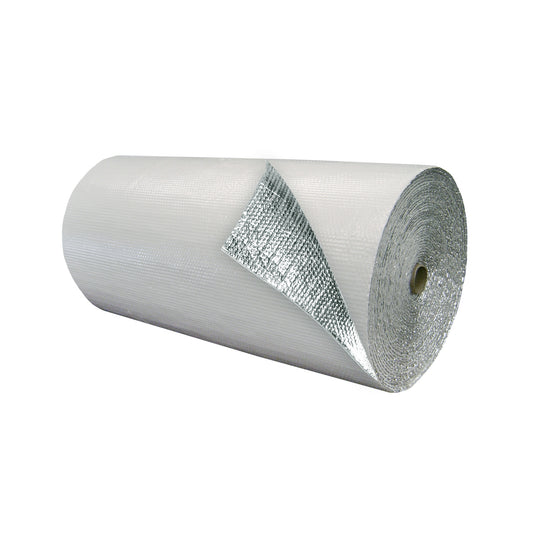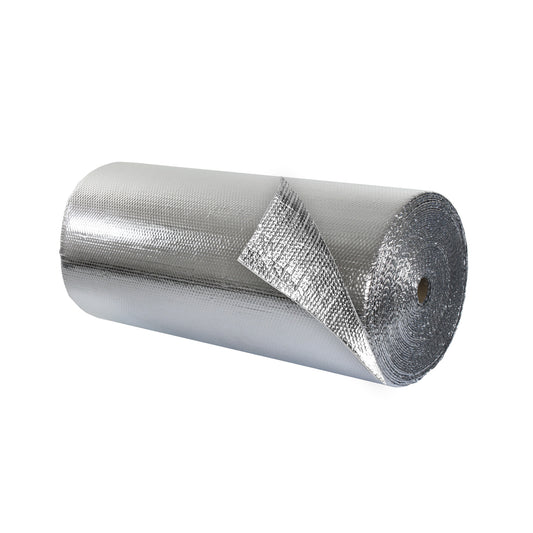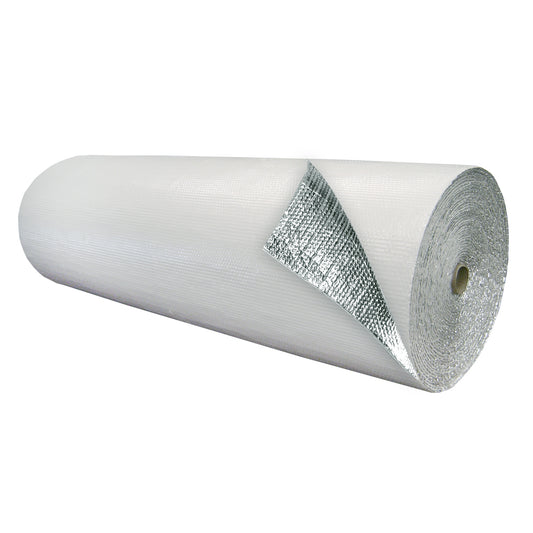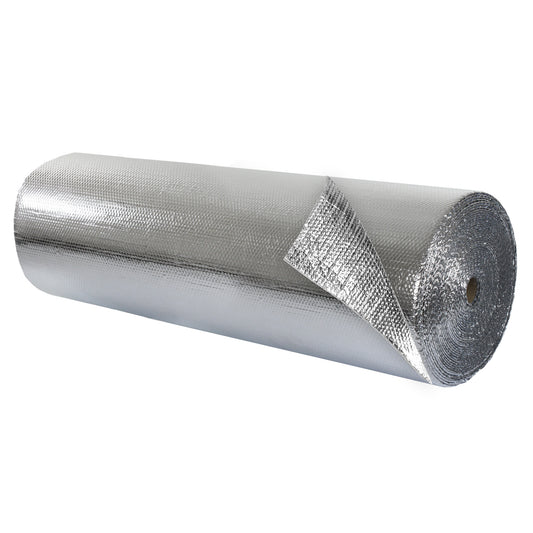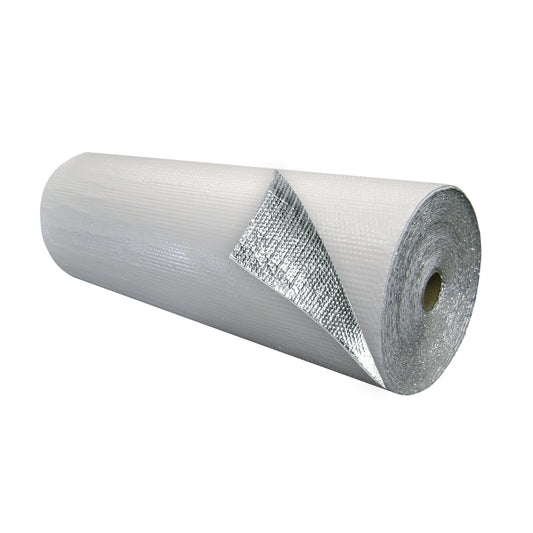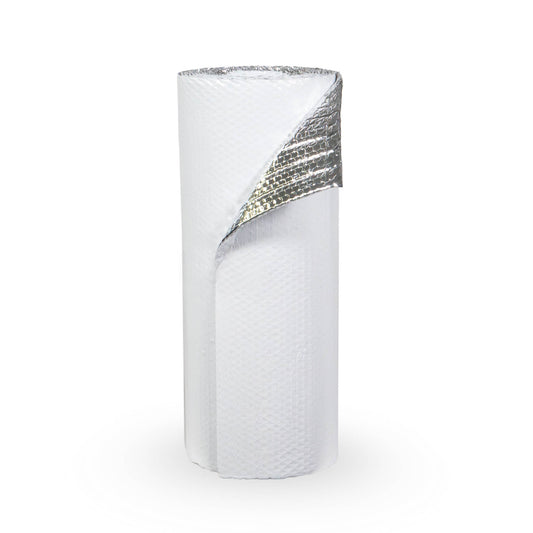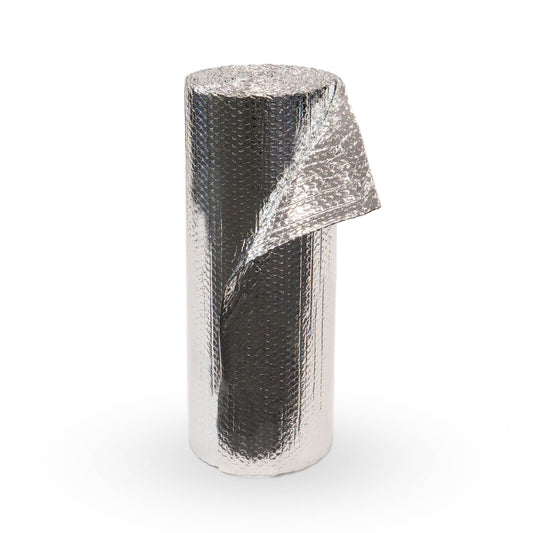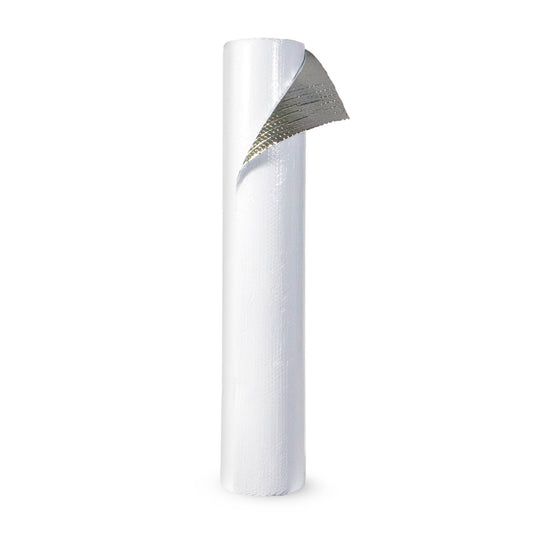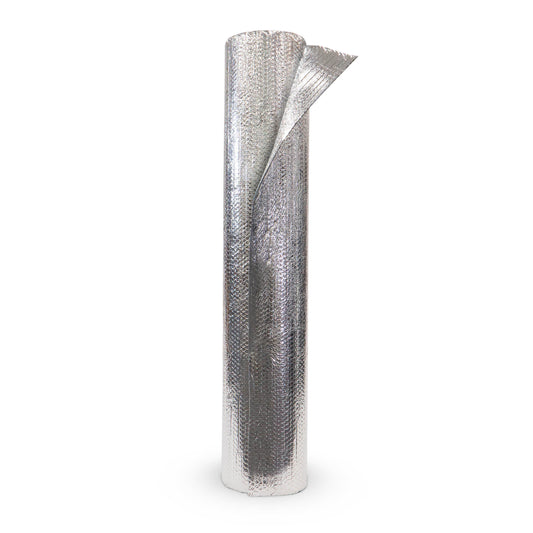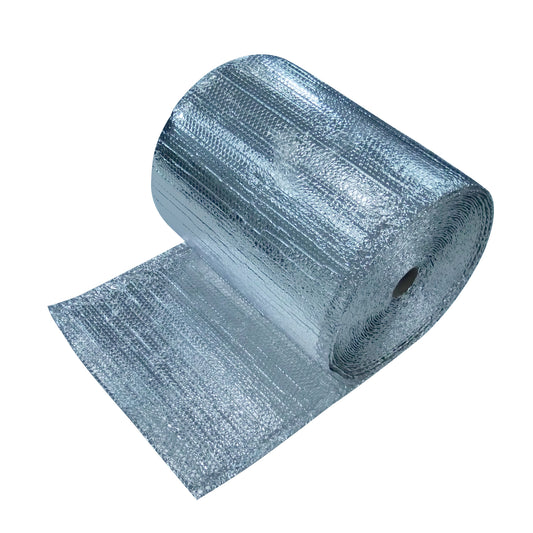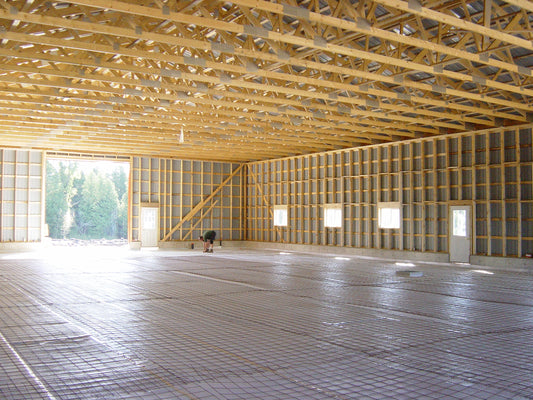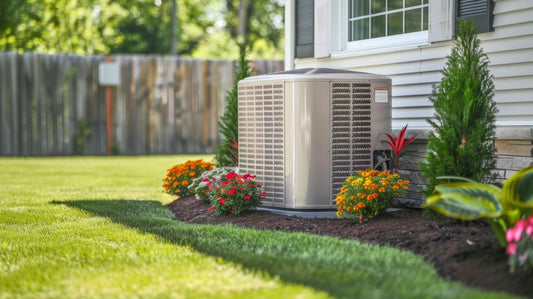Net zero energy homes have become increasingly popular among many architects and designers in recent years, and for good reason. As sustainable living continues to rise, homeowners are looking for solutions to mitigate their carbon footprint and reduce dependency on non-renewable energy sources (petroleum and natural gas) in favor of cleaner sources like solar and wind. But with rising costs of building materials, many people wonder: is the investment worth it?
In this article we'll explore the benefits of net zero energy homes and how they play a significant role in future living.
Contents:
- What is a net zero energy home?
- How do net zero energy homes work?
- Benefits of net zero energy homes
- Certifications
- How to make your home net zero
- EcoFoil reflective insulation & zero energy homes
What is a net zero energy home?
In a nutshell, a net zero energy home is a residence that generates an equal amount (or more) of renewable energy that it takes for the home to consume. The primary goal is to achieve a balance between energy usage and renewable energy generation, resulting in a 'net zero' carbon footprint. Energy-efficient systems to power the home, while minimizing any sources of energy efficiency such as window leaks, poor insulation, and excessive water use.
Zero energy homes don't have to be newly built. Many existing homes can benefit from these enhancements to become net zero. In fact, all types of homes - big or small - can qualify as zero energy homes, so long as they follow the following criteria:
- the home uses renewable energy sources, such as solar or wind power
- these clean energy sources are being produced onsite
For any homes that use renewable energy sources located offsite, they can be referred to as "carbon neutral" homes instead. Carbon neutral homes focus more on reduction of carbon emissions, rather than producing clean energy. Both ultimately work to reduce the impact that home energy consumption has on our climate.
How do net zero energy homes work?
Zero energy homes prioritize a strict balance between energy efficiency and renewable energy generation. In order for this to work, homeowners and homebuilders need to enhance various elements of their homes. Below shows a graphic of the many components involved in making a net zero energy home:

To simplify things, three essential components work together to make up net zero energy homes: the building envelope itself, mechanical systems, and renewable energy systems.
Building Envelope
A building envelope is defined as the boundary between the indoor and outdoor spaces of your home. Components that make up a building envelope include:
- walls
- doors
- windows
- insulation
- air sealing
This boundary defends the indoor climate of your home from fluctuating external temperatures, maintaining a comfortable living space regardless of the season. Poor building envelope components, such as old insulation or drafts in your home, can affect the amount of energy needed to maintain comfortable temperatures inside. Enhancing your building envelope is the first part to achieving net zero.
Mechanical Systems
Other enhancements to your home include mechanical systems like HVAC, water heaters, heat pumps, appliances, lighting, etc. As your building envelope works to keep exterior temperatures from affecting your indoor living space, your home's mechanical systems can also reduce the amount of consumption needed. This includes energy-efficient appliances like ovens, dryers, LED lights, and efficient water management.
While these enhancements tend to be more costly, they contribute significantly to a reduction in energy consumption. If you plan on becoming net zero energy certified, certain programs require homeowners to invest in energy-efficient appliances that are ENERGY STAR certified. Read more below in our 'Net Zero Energy Home Certifications' section.
Renewable Energy Systems
Lastly, net zero energy homes need onsite sources of renewable energy like solar panels and wind turbines. These sources harness the natural energy provided by the earth and generate power for a home. Such systems also work to store energy for periods of high demand or low renewable energy production.
These systems are usually the most costly, even over mechanical system upgrades. However, much like the mechanical systems, investments in solar panels and wind turbines have long-term benefits and will save you money over time.
Benefits of Net Zero Energy Homes
Embracing the net zero energy home model offers a myriad of benefits for homeowners and the environment:
-
Cost Savings: While the initial investment in energy-efficient features and renewable energy system seems high, net zero homes typically yield significant long-term cost savings through reduced utility bills and minimal maintenance expenses.
-
Tax Incentives: Moreover, installing new energy-efficient components in your home can help you with your tax breaks. Depending on the type and amount spent on these installations, you could be rewarded significant deductions off your tax bill next season.
-
Environmental Impact: By drastically reducing or eliminating reliance on fossil fuels, net zero homes mitigate climate change while reducing air and water pollution.
-
Energy Independence: Net zero energy homes empower homeowners to take control of their energy consumption and production, reducing vulnerability to fluctuating energy prices and supply disruptions. They offer a sense of self-sufficiency and resilience in the face of changing energy landscapes.
- Enhanced Comfort and Health: The superior insulation and ventilation systems employed in net zero energy homes create a more comfortable living space with comfortable, consistent temperatures and improved indoor air quality. This promotes better health and well-being for individuals, families, and pets.
Net Zero Energy Home Certifications
Different organizations offer certifications and programs in building or renovating homes to become net zero.
Type |
Description |
|
Provided by the US Department of Energy (DOE), this program provides verification of net zero energy homes and qualifies certain tax credits such as the 45L credit based on newly built or added energy properties.
|
|
|
Offers certification for buildings that meet rigorous standards and emphasizes design principles to achieve optimal levels of energy performance.
|
|
|
Administered by the US Green Building Council (USGBC), this certification prioritizes efficiency in energy maintenance, water conservation, and sustainable materials. |
|
|
Managed by the US Environmental Protection Agency (EPA), this program certifies homes that meet high standards for energy efficiency. |
|
|
Recognized by the International Living Future Institute (ILFI), this certification certifies buildings that achieve net zero energy consumption. |
|
|
Administered by the Green Building Initiative (GBI), this certification provides guidance and recognition for sustainable building practices, with assessments on energy efficiency, indoor air quality, site sustainability, and resource efficiency. |
How to Make Your Home Net Zero
Building a new home or transforming an existing home into a net zero energy residence requires a strategic approach and investment in energy-efficient upgrades. Below are some ways to get you started on your home's 'net zero' journey:
1. Conduct a home energy audit
A great first step is to conduct a home energy audit and identify areas of energy waste in your home. Depending on the type of audit you choose, these evaluations typically inspect your home's heating and cooling systems, air filtration systems, appliances, lighting, insulation, windows, doors, and more. Once the assessment is complete, you should have a list of improvements to enhance your home's overall efficiency. This helps you prioritize areas of improvements based on your budget.
2. Maximize Passive Design
When designing new homes, leverage passive solar design to optimize natural lighting and heating. This includes orienting windows to capture sunlight, using thermal mass to store heat, and implementing shading strategies to minimize summer heat gain.
3. Seal air leaks
Next, start working on ways to shore up your building envelope. One of the easiest ways to begin this process is by sealing up any air leaks found in your home. Common places include areas around windows, doors, or other places of outdoor passage.
For larger air leaks and drafty spots caused by holes in your home's roof, walls, ceilings, or foundation, consider hiring a local contractor to get these costly issues fixed.
Heat can easily escape into your attic in winter months. You can easily avoid this common (and often unnoticed) problem with an attic draft cap. This will also prevent unwanted heat from leaking into your living space during hot summers.
Heating and cooling vents can also be a source of HVAC inefficiency—especially if you have large unoccupied rooms. Consider covering your vents with magnetic covers. This is an easy project that can be done in minutes, and can have a drastic effect on the efficiency of your furnace/air conditioner over time.
4. Add Insulation
Insulation plays an important role in maintaining a comfortable interior for your home. It contributes to your building envelope, preventing heat transfer from affecting your indoor environment and reducing the energy needed to maintain a comfortable temperature inside. For optimal performance, consider using both traditional and reflective insulation to combat both conductive and radiant heat transfer. Using both types improves your home's insulation system and helps reduce energy consumption.
5. Upgrade to energy-efficient appliances & systems
If you're looking to go further in reducing energy and water consumption in your home, try replacing your household appliances and fixtures with energy-efficient ones. Reducing the amount of electricity and water used in your home helps you maintain your net zero balance between energy savings and energy consumption.
Below are household items you can enhance to reduce energy consumption, including:
- Efficient appliances like ovens, refrigerators, washers, and dryers.
- Windows with low-emissivity coatings and multiple panes to minimize heat gain and loss during the seasons.
- Upgraded HVAC and air filtration systems.
- Vent covers to limit the flow of heating/cooling systems to unoccupied rooms
- Alternative heating and cooling solutions such as heat pumps or geothermal systems.
- LED lighting and fixtures.
- Smart devices and automation systems such as thermostats and zone heating.
- Air-tight doors.
- Draft caps for your attic to prevent heat from escaping in winter or leaking in during hot, summer months
- Low-flow toilets, showerheads, and faucets.
- Rainwater irrigation and filtration systems for reduced water usage.
6. Integrate renewable energy
Lastly, add clean, renewable energy sources to your home. For solar panels, the US Dept. of Energy states that the best place for optimal performance is on a south-facing roof with a slope between 15° and 40°. If your roof doesn't meet this criteria, no need to worry. Any open space around your home that is exposed to constant sunlight throughout the day will work just fine. For wind turbines, consider placing these on your home's roof for more wind exposure and improved performance.
Additionally, invest in energy storage systems that store excess energy for use in winter and other slow periods of generation.
EcoFoil reflective insulation & zero energy homes
Reflective insulation (also known as Bubble Foil Insulation) can be an effective ally in the development of net zero energy homes. Adding this popular variety of insulation to your structure not only reflects radiant away from your roof, ceilings, and walls in hot summer months, but also prevents heat from escaping in winter. Both of these benefits reduce the energy needed to heat or cool your living space year-round.
Under Slab Insulation

Basements and ground floors remain the biggest culprits of heat loss or heat gain for your home. Under slab reflective insulation provides exceptional protection against both heat gain and loss year-round. This product also acts as a vapor barrier and radon barrier, protecting the comfort and quality of your indoor environment.
Learn more about Under Slab Insulation.
Radiant Barrier for Attics
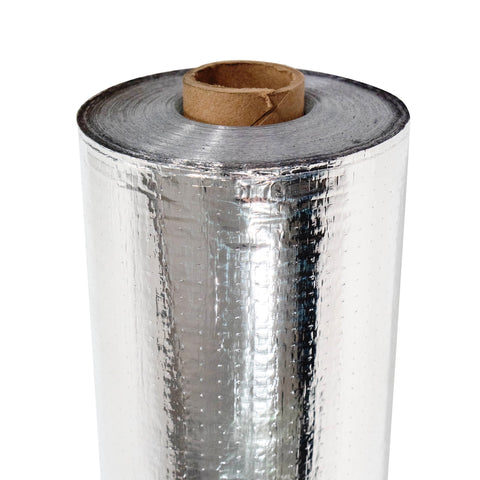
Attic spaces are another area where heat loss and heat gain occurs in your home. EcoFoil offers perforated radiant barrier as the best solution to minimizing this problem. Designed with tiny perforated holes, perforated radiant barrier remains effective in blocking up to 96% of radiant heat transfer while allowing moisture to pass through, preventing problems such as mold, mildew, and condensation. This product can be installed under the rafters or over the floor of the attic space.
We also provide solid radiant barrier options for those who prefer a vapor barrier instead. Keep in mind, attic spaces need proper ventilation and air movement so moisture isn't trapped.
Bubble Foil Insulation

You can also use bubble foil insulation to shore up your home's walls, ceilings, and floors. Bubble foil insulation does the exact same job as radiant barrier, but also prevents condensation buildup which is a common problem when temperatures vary drastically on either side of the material. EcoFoil offers both single bubble and double bubble foil insulation to accommodate different climate types. Both are also available in "Foil/Foil" and "White/Foil" surfaces.
Choosing single or double bubble insulation will depend on the climate of your home's location. For more information about the differences between each type, this article explains in more detail.
Talk with our product experts today at (888) 349-3645 for more information on how EcoFoil reflective insulation can contribute to your net zero energy home.


